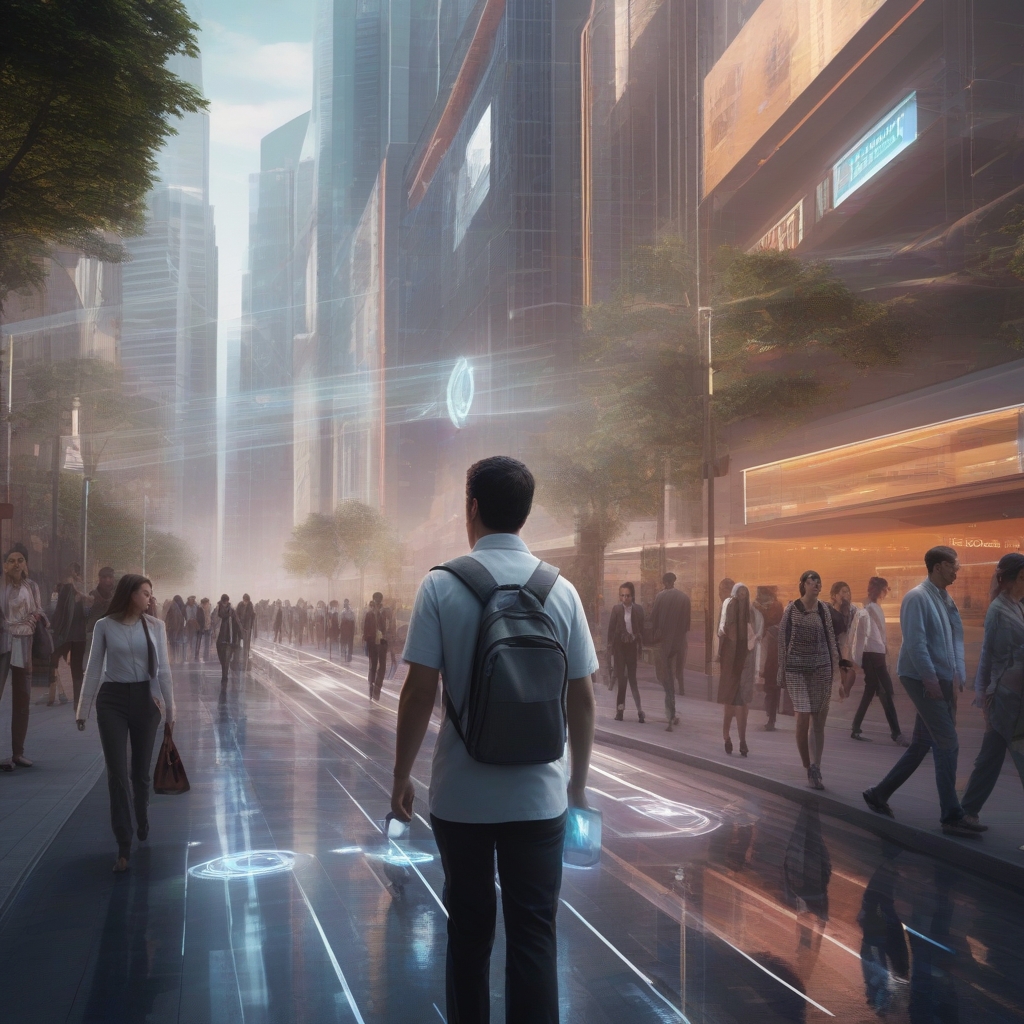The Unseen World of Artificial Intelligence
As we stride further into the 21st century, artificial intelligence (AI) has woven itself into the very fabric of our daily lives. Despite being a driving force behind the evolution of modern technology, AI often remains concealed, blending into the background as people go about their routines. The paradox of invisible AI raises the question: why do so many people continue to overlook its presence and potential?
The Subtle Pervasiveness of AI
AI technology powers a wide array of devices and services, ranging from **smartphones** to **virtual assistants** like Siri and Alexa, **recommendation systems** on streaming platforms, and **real-time traffic updates** on navigation apps. This invisible yet pervasive presence in our lives stems from its design—a seamless integration built to enhance functionality without disrupting the user experience. However, this quiet assimilation often means its impact goes unnoticed by the general public.
Why AI Remains an Overlooked Phenomenon
Despite AI’s omnipresence, several factors contribute to why people still underestimate its scope and significance.
Lack of Visible Impact
The most significant advancements in AI occur behind the scenes, enhancing processes rather than visibly transforming them. As a result, **AI’s contributions** often go unnoticed unless there’s a dramatic technological leap, such as the introduction of autonomous vehicles or intelligent humanoid robots.
Understanding Gap
Another key reason AI is frequently ignored is the educational divide. Many people lack a fundamental understanding of how AI operates or its potential applications. The absence of widespread education about AI fosters a disconnect between available technology and user engagement.
– **Educational Barriers:** Without a clear grasp of AI’s workings, many individuals are hesitant to embrace the technology fully.
– **Complexity and Jargon:** AI conversations often involve complex technical jargon, making it difficult for those outside technical fields to engage.
Fear and Misconceptions
Popular culture has long fueled a dystopian narrative regarding AI, portraying it as a potential harbinger of automation-led job loss or rogue machines. These fears, albeit rooted in speculation, contribute to the general hesitance toward recognizing AI’s day-to-day utility.
**Navigating Fear:**
– **Media Influence:** Movies and books often depict AI as threatening, overshadowing its real-world benefits.
– **Job Security Concerns:** The idea that AI could displace human workers adds to the reluctance to explore its advantages further.
Bridging the Awareness Gap
To leverage AI’s potential fully, it is essential to address the gap in awareness and understanding across various demographics.
Emphasizing AI Education
Integrating AI literacy into education systems can demystify the technology, illustrating its potential and limitations. Educational initiatives should focus on:
– **Incorporating AI into Curriculum:** Introducing basic AI concepts in schools to prepare future generations.
– **Public Workshops and Resources:** Community-driven learning sessions can help reduce the AI knowledge gap for adults.
Choosing Visible Impact Projects
Fostering projects where AI’s impact is visibly transformative can help raise awareness of its potential. Examples include smart cities, where AI-controlled traffic systems can be visibly seen reducing congestion or improving energy efficiency.
Debunking Myths and Addressing Fears
To quell misconceptions, clear and transparent discussions about AI’s realistic impacts and boundaries are necessary. Addressing fears directly can dismantle barriers to acceptance:
– **Promoting Realistic Narratives:** Sharing real-world case studies where AI has improved quality of life or job performance.
– **Open Dialogues:** Facilitating conversations between AI experts, policymakers, and the public to discuss ethical concerns and safeguards.
The Future of AI Awareness
AI’s journey from the periphery to the forefront of public consciousness is a gradual process requiring collective effort. By addressing the factors contributing to its current obscurity, we can better harness its potential to transform society positively. As AI continues to evolve, cultivating a well-informed citizenry will ensure that these technological advancements complement human ingenuity, rather than overshadow it. This understanding not only paves the way for a future enriched by AI but also ensures we are active participants in shaping this new age of innovation.

Leave a Reply